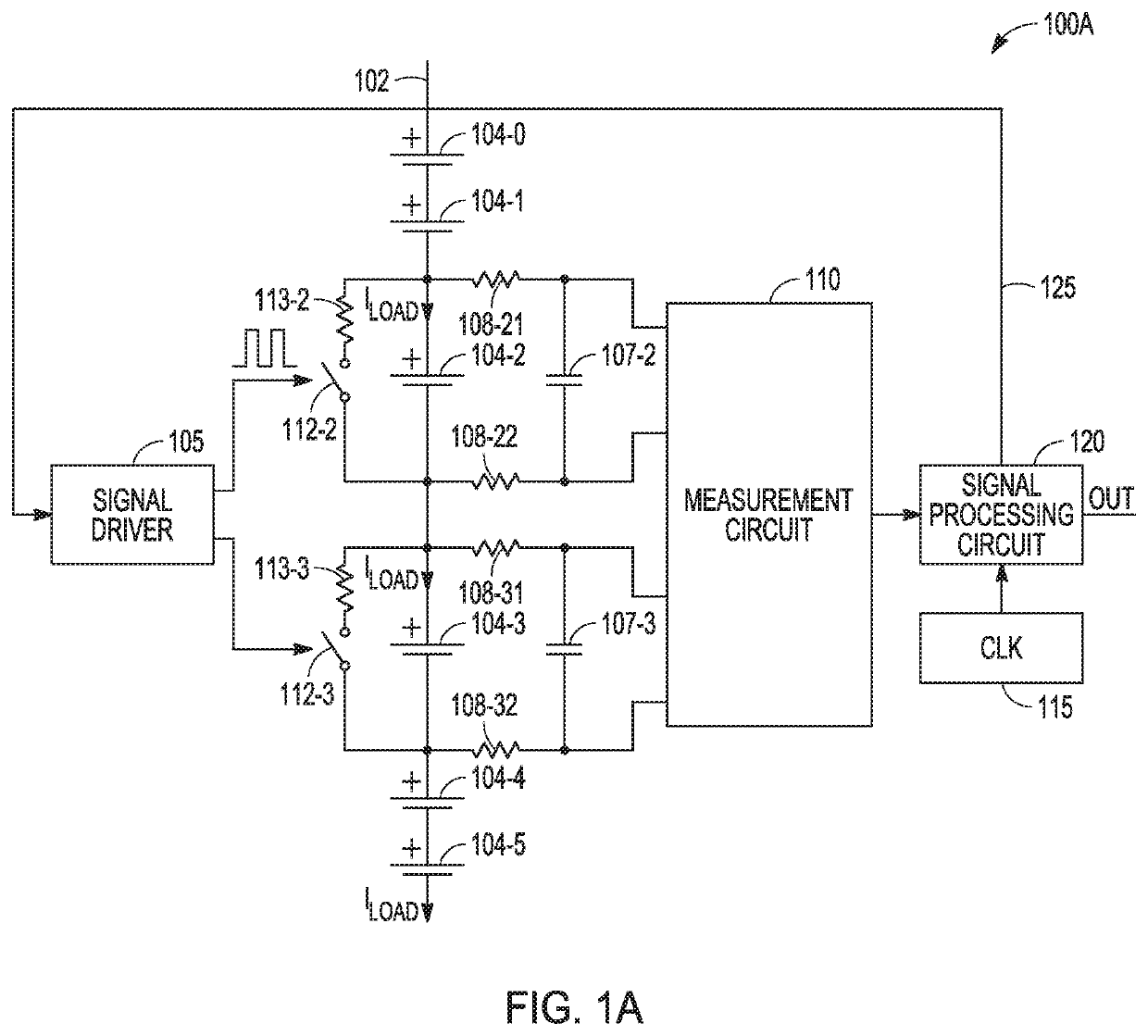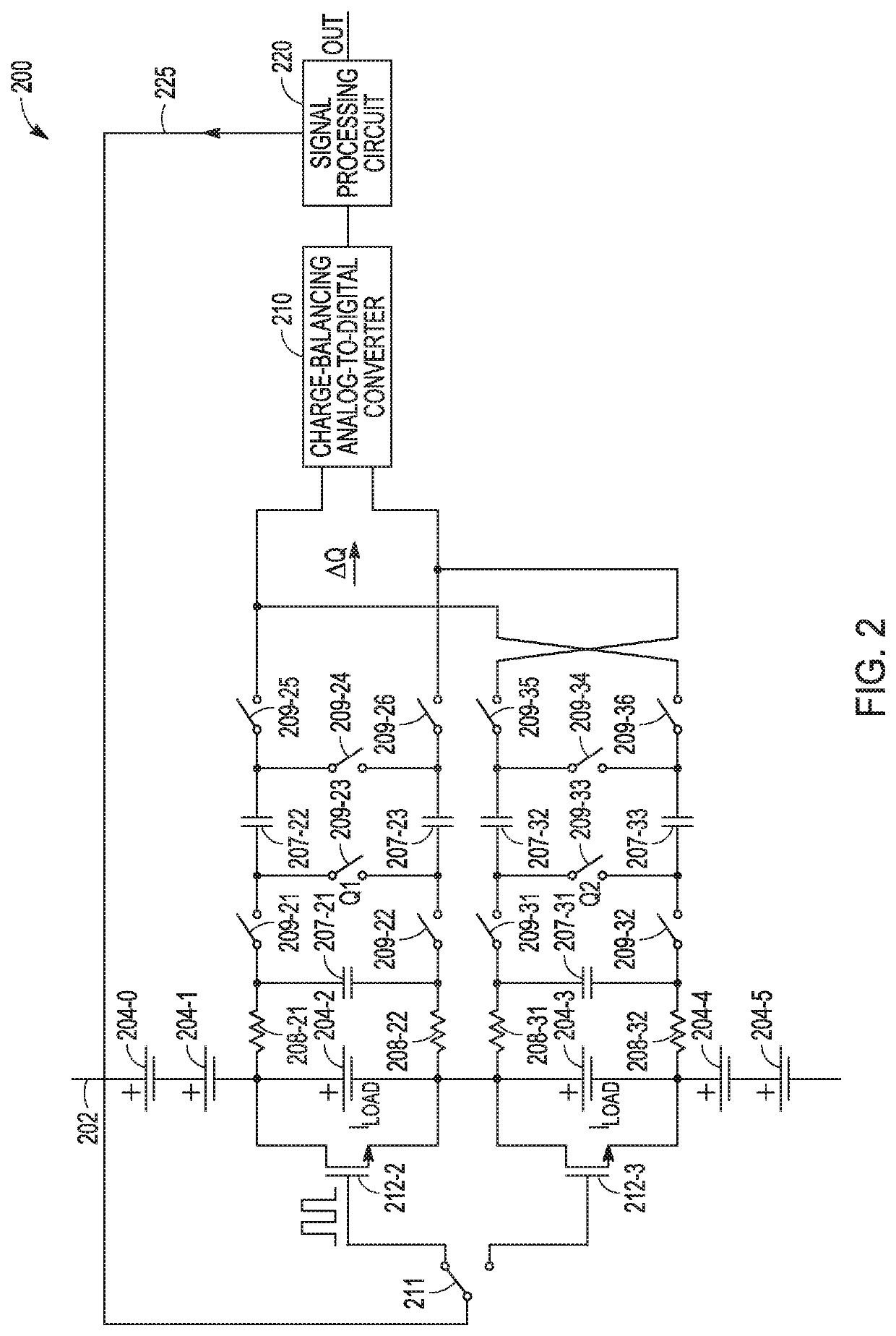Differential electrical impedance spectroscopy
- Summary
- Abstract
- Description
- Claims
- Application Information
AI Technical Summary
Benefits of technology
Problems solved by technology
Method used
Image
Examples
Embodiment Construction
[0016]One way to measure one or more battery parameters of a set of battery cells is not via voltage, but via frequency-dependent electrical impedance of each of the battery cells. The complex impedance of a battery cell, over for example 0.1 Hz to 10 kHz range, is a function of SOC, SOH and internal temperature in different ways, so each of these parameters can be determined with the measurement of impedance over frequency. In various embodiments, electrical impedance spectroscopy (EIS) can be performed to measure a battery parameter using a dual-cell approach. Of two battery cells, only one battery cell is excited at a time, with a difference between the battery cell voltages of the two battery cells being processed. The two battery cells can be neighboring battery cells in a set of battery cells that share a common load current or two non-neighboring battery cells in the set that share a common load current. This difference measurement can achieve load current and battery cell vo...
PUM
 Login to View More
Login to View More Abstract
Description
Claims
Application Information
 Login to View More
Login to View More - R&D
- Intellectual Property
- Life Sciences
- Materials
- Tech Scout
- Unparalleled Data Quality
- Higher Quality Content
- 60% Fewer Hallucinations
Browse by: Latest US Patents, China's latest patents, Technical Efficacy Thesaurus, Application Domain, Technology Topic, Popular Technical Reports.
© 2025 PatSnap. All rights reserved.Legal|Privacy policy|Modern Slavery Act Transparency Statement|Sitemap|About US| Contact US: help@patsnap.com



